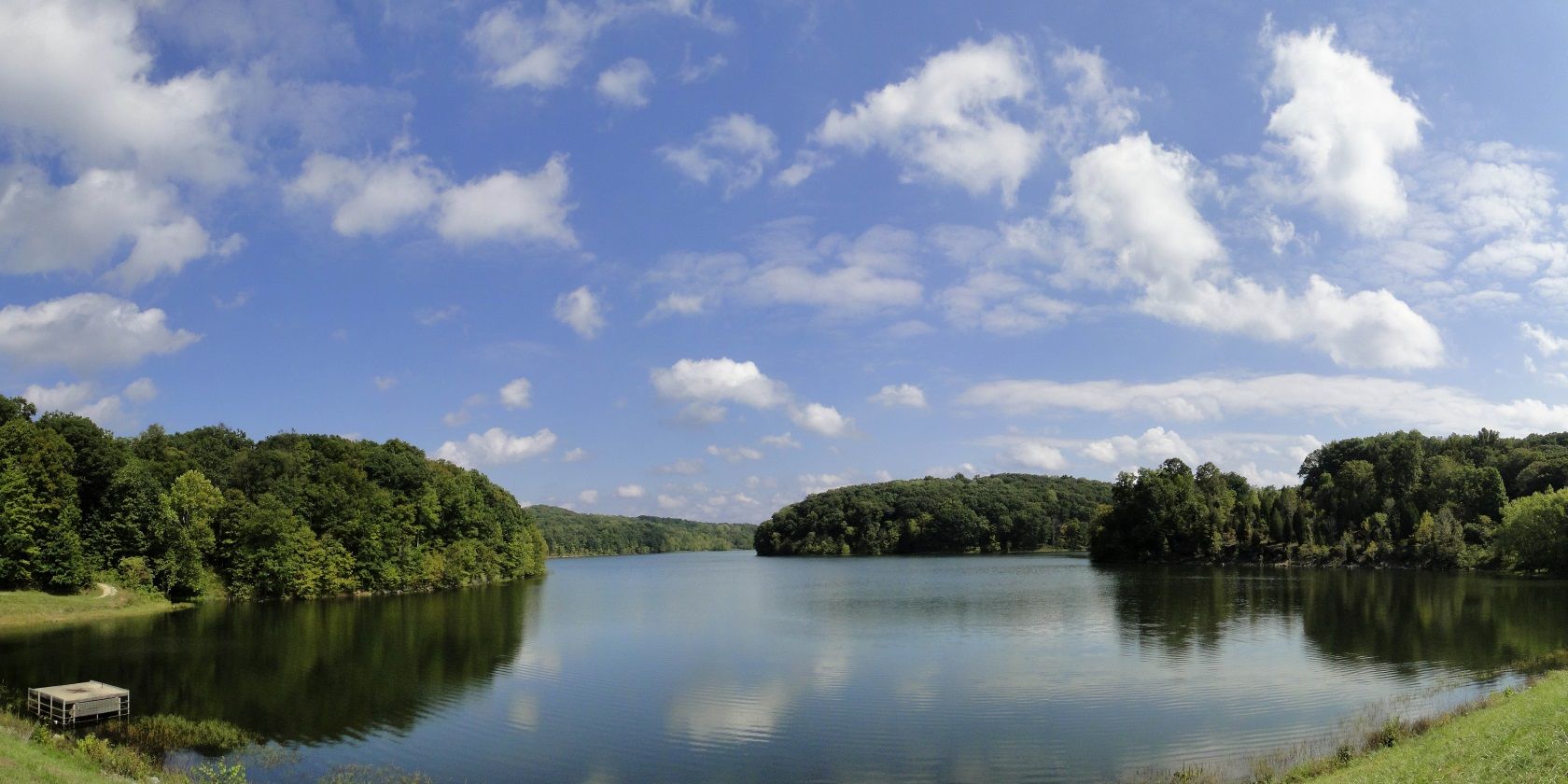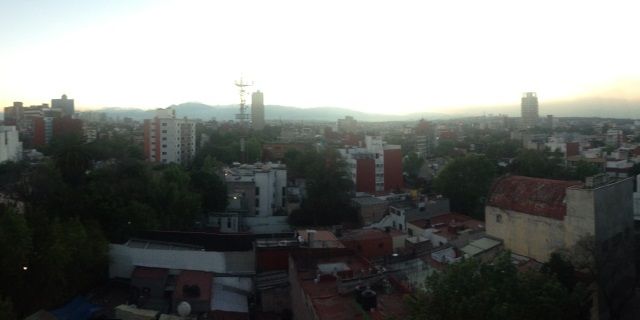Panoramic images of stunning landscapes almost always look marvellous, but they can be extremely difficult to create. Using a smartphone, however, there are various techniques and tricks – not to mention apps – which you can employ to get the best results.
Lighting and Shape
In standard photos, you should be able to position yourself to take advantage of the best light source and let your camera do the rest.
With panoramic photography, the light changes with each composite snap, especially if you're indoors. The shape of the scene will also play an important factor in this, as well as any walls and fabrics that are present. Light will diffuse across softer materials and bounce off walls and floors, causing considerable problems with the picture.
Even outdoors can be difficult. The snap above has a striping effect there the photos were matched up by the software. Why are they darker at one end? Difficult to say as it was years since they were taken. However, a finger casting a shadow over the lens can cause this problem, as can a sky with lots of clouds rapidly passing in front of the sun.
For the best, most consistent results, avoid taking panoramic photos with your smartphone if you're indoors unless you have control over the lighting and/or you are looking for a particular effect or atmosphere that can only be attained by confused lighting. Also, keep your fingers out of the way.
Avoid Movement Where Possible
Photographing groups of people is difficult at the best of times – it's even tougher when you're creating panoramic photos, as people (and vehicles) tend to move. The example above (created several years ago on an old HTC Touch Pro) demonstrates the risks perfectly: the car on the right is also seen just left of centre!
As such, panoramic photos should avoid including anything that moves rapidly, so if you plan to photograph a group of people they're all going to have to be extremely well behaved and aware of what you're trying to achieve for it to work. Taking a few test shots might be a good idea so you have something to paper over any cracks with later on.
If weather conditions are bad, you'll also encounter problems with a panoramic photo, whether you're snapping a landscape or a group photo. Wind and rain can cause problems with matching up the subsequent shots, and as such these conditions are best avoided.
Positioning And Stability
A panoramic photo requires motion from left to right, which means you're going to have to move between each of the composites.
This, of course, is quite difficult, particularly if you're schooled in the art of not moving while taking a photo.
Before you start slowly shuffling you're body round by a couple of inches, keeping your feet roughly the same distance apart in a steady pose, you'll need to make sure you've selected a suitable position, one that captures the image you're hoping to record. Bad positioning can result in ghosted objects, or bumpy horizons, as seen in this photo.
Any horizontal straight lines (tables, kerbs, buildings) that are positioned close to the camera can be "bent" in the creation of a panorama. Although this can be used to your advantage if used intelligently, adopting a position away from any such lines will help you produce a better photo.
The old photography tricks like snapping as you breathe out and using walls, tripods and monopods are all useful for taking panoramic photos on your smartphone.
Use Native Panorama Photo Apps
Android and iPhone users running the most up-to-date versions of their operating systems don't need to rely on third party apps (see below) to create panoramic photos - both platforms' camera apps have the software built in already.
Using these tools, you can create panoramic photos wherever you are. These apps offer a guided user interface to help you to correctly line up the next shot in the series before stitching together your panorama automatically, as shown in this example from an iPhone 5.
This is particularly useful if you're abroad and without affordable mobile Internet access, or in the countryside in regions without a signal. Want to snap a jaw-dropping panoramic vista? No problem!
If your phone doesn't already come with a panorama photo function or native app try a specialised app, available from your platform's app store, some of which are listed below.
Top Apps For Panoramic Photos
If you're reading this then you're probably interested in snapping panoramic photos with your smartphone. As such, the notion of stitching a series of landscape snaps together post-production has hopefully evaporated – don't do it, it is exceedingly silly in this day and age, and an immense waste of time. Even if your computer has software that will do the job for you, there are plenty of apps that will handle this for you.
For iOS, Cycloramic is a great choice, and features hands-free panorama creation for iPhone 5 users (standard panorama features will work on other devices). If you have created your panoramic series of photos already but still need to edit them together, the free Stitch Panorama is a great option.
Android users can rely on app Photaf Panorama (Pro or Free) to create great panoramas.
Note that there are several video-capture panorama apps on Android and iPhone. Many might consider recording a short video as cheating. The results of such apps can be impressive, however.
If you're snapping panoramas with a Windows Phone – perhaps a Nokia Lumia 920 or 1020 with an impossibly excellent camera – then you might consider employing Nokia Panorama to create stunning panoramic vistas with the minimum of effort. As an alternative, Microsoft's Photosynth gives results on a wider selection of devices.
Panoramas Are For Everyone
The first time I attempted a panoramic photo was in Torquay in 1991. I'm happy to say that the photos no longer exist so I'm unable to share them here. Having said that, they would provide an excellent example of how poorly a bad panorama can look (and I'm aware that the others displayed here are not exactly definitive!).
Have you used your smartphone to take a panoramic photo? Do you have any preferred apps, or examples to share? Let us know!
Featured Image Credit: W9NED, Mexican panorama by Justine Cawley





